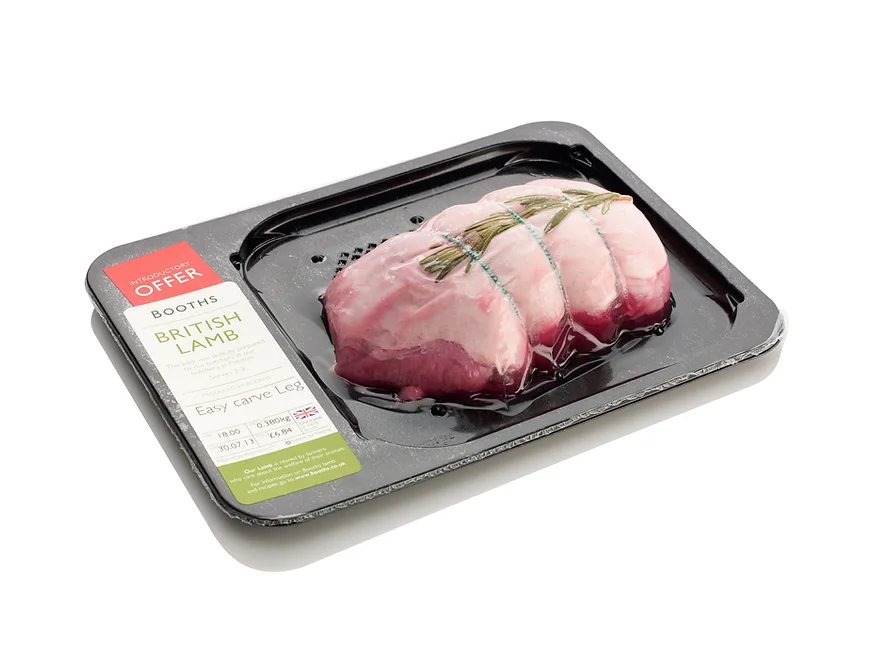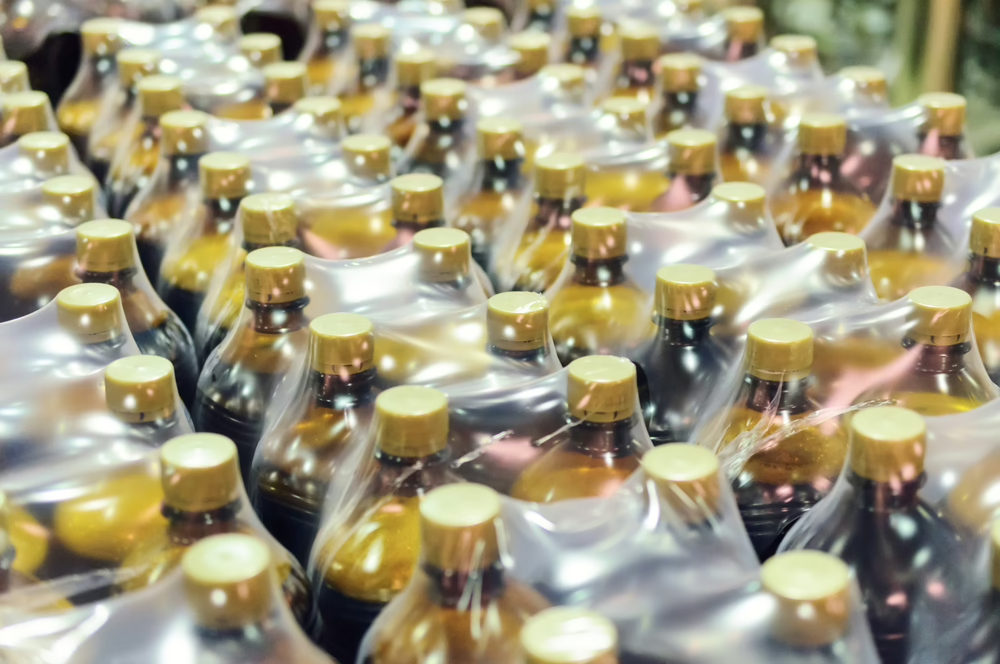If you have ever found yourself holding a snack bag or peeling the film off a container of strawberries, you have probably wondered: what exactly is this stuff made of? For many businesses, choosing the right packaging film is more than just picking a clear wrap off the shelf.
It’s all about protecting products, keeping food fresh, and even making a statement about sustainability. At RTG Films, we get a lot of questions from customers who want to make the smartest choice for their packaging. Let’s talk about three of the most common options: polypropylene (PP), polyethylene (PE), and PLA and how to pick the one that is right for you.
What Are These Packaging Films, Really?
Let’s start with the basics. Polypropylene, or PP, is a tough, clear plastic film. You will see it in chip bags, candy wrappers, and labels. Polyethylene, or PE, is the film you find in grocery bags, shrink wrap, and lots of food packaging.
It comes in a few different forms, including low-density (LDPE), high-density (HDPE), and linear low-density (LLDPE). Then there is PLA, which stands for polylactic acid. This one is a bit different because it is made from plants like corn or sugarcane, and it is compostable under the right conditions.
Each of these materials comes with its own strengths, and the best choice really depends on what you are packaging and what you care about most.
Polypropylene (PP): The Reliable All-Rounder
Think about the last time you opened a bag of chips or a granola bar. That crinkly, clear film that keeps everything fresh is probably polypropylene. PP is popular because it is strong and flexible. You can bend it, twist it, and it won’t tear easily. It is also really clear, so if you want customers to see your product, this is a great option.
One thing people love about PP is how well it keeps out moisture and resists chemicals. If you are packaging something that needs to stay dry or uncontaminated, you’re in good hands. It also holds up to heat better than many plastics, which is handy if your packaging needs to be sealed or sterilized.
Printing on PP is a breeze too. If you have ever admired a snack bag’s crisp graphics, you are seeing the benefits of this film’s smooth surface. And don’t forget that it is lightweight and cost-effective, so you are not paying extra to ship a bunch of heavy packaging.
Key benefits of Polypropylene (PP):
- Strong and flexible; resists tearing and puncturing
- Excellent clarity for product visibility
- Outstanding moisture and chemical resistance
- High heat resistance for sealing or sterilization
- Smooth surface for high-quality printing
Best Uses for Polypropylene (PP):
- Snack food packaging
- Candy wrappers
- Labels and tape liners
- Medical and pharmaceutical packaging
- Microwaveable containers
If you want something durable, clear, and easy to brand, PP is a solid bet.
Polyethylene (PE): The Flexible Protector
Polyethylene is the unsung hero of everyday packaging. If you have ever carried groceries home in a plastic bag or seen produce wrapped in film at the store, you have used polyethylene. What makes it special is its flexibility. It is soft, easy to mold, and can stretch to fit around all sorts of shapes.
Polyethylene is a champion when it comes to keeping out moisture and dust. That is why it is so common for food packaging, especially things like bread bags and frozen food wraps. It is also customizable because you can get it in different thicknesses, widths, and even colors. Some versions have extra features, like UV protection or anti-fog coatings.
It is affordable, tough, and can be heat-sealed for a secure closure. Consulting reputable polyethylene film suppliers like RTG Films can lead you to the perfect fit for your products.
Key benefits of Polyethylene (PE):
- Highly flexible and soft, ideal for irregular shapes
- Excellent moisture and dust barrier
- Customizable in thickness, width, and color
- Can include additives like UV protection or anti-fog
- Suitable for heat sealing and printing
Best Uses for Polyethylene (PE):
- Shrink and stretch wrap
- Bread bags and frozen food packaging
- Produce packaging
- Pill bottle wrapping and liquid medication packaging
If you need something flexible, protective, and cost-effective, PE is likely your go-to.
PLA (Polylactic Acid): The Eco-Friendly Choice
If your brand is all about sustainability, PLA is probably on your radar. Unlike PP and PE, PLA is made from renewable resources. Think corn or sugarcane. It is compostable in industrial facilities, which means it can break down into natural materials under the right conditions.
PLA is a great option for brands that want to lower their carbon footprint. It is FDA-approved for food contact, so it is safe for packaging everything from baked goods to fresh produce. Like PP, it is clear and takes printing well, so your branding will look sharp. Those who seek out compostable film packaging would be great suitors for PLA film.
One thing to keep in mind is that PLA doesn’t handle heat as well as prior films mentioned, so it is not the best choice for products that need to be microwaved or exposed to high temperatures.
Key benefits of PLA (Polylactic Acid):
- Made from renewable, plant-based resources
- Compostable in industrial facilities
- Lower carbon footprint than petroleum-based plastics
- High clarity and printability
- Safe and odorless for food packaging
Best Uses for PLA (Polylactic Acid):
- Compostable food packaging
- Produce bags
- Single-use plates and cutlery
- Sustainable branding and eco-friendly product lines
- Packaging for farmers’ markets and green-focused brands
If you are selling at a farmers’ market or want your packaging to make a statement about sustainability, PLA is a strong contender.
Comparing the Three: What Matters Most to You?
So, how do you decide? Start by thinking about what you are packaging. If you need something strong, clear, and heat-resistant, PP is probably your best bet. For flexibility and moisture protection, especially for things like bread or produce, PE is hard to beat. If your customers care about compostability and renewable resources, PLA is the way to go.
Here is a quick side-by-side:
| Feature | Polypropylene (PP) | Polyethylene (PE) | PLA (Polylactic Acid) |
| Source | Petroleum-based | Petroleum-based | Plant-based (renewable) |
| Clarity | High | Moderate to high | High |
| Flexibility | Moderate | High | Moderate |
| Moisture Barrier | Excellent | Excellent | Good |
| Chemical Resistance | Excellent | Good | Moderate |
| Heat Resistance | High | Moderate | Low |
| Recyclability | Yes | Yes | Industrial compostable |
| Cost | Low | Low | Moderate to high |
| Sustainability | Some eco options | Recyclable | Compostable, low carbon |
How to Make the Right Choice
At RTG Films, we always tell customers to think about three things: your product, your values, and your budget. Are you packaging something fragile or perishable? Do you want your packaging to reflect your commitment to the environment? Is cost a major factor for your business? There is no one-size-fits-all answer, but asking these questions can narrow down your options.
If you aren’t sure, don’t be afraid to reach out. Sometimes, the best way to decide is to test a few samples and see how they perform with your actual product. Our team is always happy to help you weigh the pros and cons and find the perfect fit.
Choosing the right polymer film doesn’t have to be complicated or intimidating. By understanding the strengths of polypropylene, polyethylene, and PLA, you can make a choice that protects your products, supports your brand, and meets your customers’ expectations.
If you are curious to see the difference for yourself, or if you want to talk through your options, give RTG Films a call. We take pride in helping businesses find packaging solutions that work. Today, tomorrow, and for the future. Your packaging journey starts here, and we are excited to be part of it.



